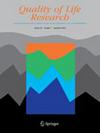Kellee Howard, Daniel Adelman, Sonal Ghura, Sarah Acaster, Sarah Clifford, Ciaran P Kelly, Susan A Martin, Lisa M Meckley, Daniel A Leffler
下载PDF
{"title":"开发腹腔疾病症状日记 2.1©(CDSD 2.1©)患者报告结果测量方法。","authors":"Kellee Howard, Daniel Adelman, Sonal Ghura, Sarah Acaster, Sarah Clifford, Ciaran P Kelly, Susan A Martin, Lisa M Meckley, Daniel A Leffler","doi":"10.1007/s11136-024-03799-6","DOIUrl":null,"url":null,"abstract":"<p><strong>Purpose: </strong>For patients with celiac disease (CeD), the only current management option is adherence to a strict gluten-free diet (GFD); however, many patients on a GFD continue to experience symptoms with a significant impact on quality of life. Potential new treatments for CeD are under development and a validated patient-reported outcome measure is required to evaluate their utility in clinical trials. The purpose of this article is to provide a history of the development of the Celiac Disease Symptom Diary (CDSD) 2.1<sup>©</sup> for use in clinical trials.</p><p><strong>Methods: </strong>Qualitative and quantitative studies were conducted from 2010 to 2021, including concept elicitation and cognitive debriefing interviews with adult and adolescent participants with CeD (N = 93) diagnosed via biopsy and/or serology and input from eight interviews with CeD clinical experts. During these studies, different iterations of the CDSD were presented to the US Food and Drug Administration and the European Medicines Agency, and modifications were made in line with their feedback.</p><p><strong>Results: </strong>These studies ultimately led to the development of CDSD 2.1<sup>©</sup>, a daily diary which focuses on key symptoms of CeD (abdominal pain, bloating, diarrhea, nausea and tiredness). This patient-reported outcome measure was readily understood by adult and adolescent participants with CeD and content validity was demonstrated in both populations.</p><p><strong>Conclusion: </strong>CDSD 2.1<sup>©</sup> is a content-valid patient-reported outcome measure developed in accordance with best practices and regulatory guidance. A thorough exploration of the psychometric properties of CDSD 2.1<sup>©</sup> for both adult and adolescent participants with CeD is ongoing to support utilization in clinical trials.</p>","PeriodicalId":20748,"journal":{"name":"Quality of Life Research","volume":" ","pages":"3275-3282"},"PeriodicalIF":3.3000,"publicationDate":"2024-12-01","publicationTypes":"Journal Article","fieldsOfStudy":null,"isOpenAccess":false,"openAccessPdf":"https://www.ncbi.nlm.nih.gov/pmc/articles/PMC11599373/pdf/","citationCount":"0","resultStr":"{\"title\":\"Development of the celiac disease symptom diary version 2.1<sup>©</sup> (CDSD 2.1<sup>©</sup>) patient-reported outcome measure.\",\"authors\":\"Kellee Howard, Daniel Adelman, Sonal Ghura, Sarah Acaster, Sarah Clifford, Ciaran P Kelly, Susan A Martin, Lisa M Meckley, Daniel A Leffler\",\"doi\":\"10.1007/s11136-024-03799-6\",\"DOIUrl\":null,\"url\":null,\"abstract\":\"<p><strong>Purpose: </strong>For patients with celiac disease (CeD), the only current management option is adherence to a strict gluten-free diet (GFD); however, many patients on a GFD continue to experience symptoms with a significant impact on quality of life. Potential new treatments for CeD are under development and a validated patient-reported outcome measure is required to evaluate their utility in clinical trials. The purpose of this article is to provide a history of the development of the Celiac Disease Symptom Diary (CDSD) 2.1<sup>©</sup> for use in clinical trials.</p><p><strong>Methods: </strong>Qualitative and quantitative studies were conducted from 2010 to 2021, including concept elicitation and cognitive debriefing interviews with adult and adolescent participants with CeD (N = 93) diagnosed via biopsy and/or serology and input from eight interviews with CeD clinical experts. During these studies, different iterations of the CDSD were presented to the US Food and Drug Administration and the European Medicines Agency, and modifications were made in line with their feedback.</p><p><strong>Results: </strong>These studies ultimately led to the development of CDSD 2.1<sup>©</sup>, a daily diary which focuses on key symptoms of CeD (abdominal pain, bloating, diarrhea, nausea and tiredness). This patient-reported outcome measure was readily understood by adult and adolescent participants with CeD and content validity was demonstrated in both populations.</p><p><strong>Conclusion: </strong>CDSD 2.1<sup>©</sup> is a content-valid patient-reported outcome measure developed in accordance with best practices and regulatory guidance. A thorough exploration of the psychometric properties of CDSD 2.1<sup>©</sup> for both adult and adolescent participants with CeD is ongoing to support utilization in clinical trials.</p>\",\"PeriodicalId\":20748,\"journal\":{\"name\":\"Quality of Life Research\",\"volume\":\" \",\"pages\":\"3275-3282\"},\"PeriodicalIF\":3.3000,\"publicationDate\":\"2024-12-01\",\"publicationTypes\":\"Journal Article\",\"fieldsOfStudy\":null,\"isOpenAccess\":false,\"openAccessPdf\":\"https://www.ncbi.nlm.nih.gov/pmc/articles/PMC11599373/pdf/\",\"citationCount\":\"0\",\"resultStr\":null,\"platform\":\"Semanticscholar\",\"paperid\":null,\"PeriodicalName\":\"Quality of Life Research\",\"FirstCategoryId\":\"3\",\"ListUrlMain\":\"https://doi.org/10.1007/s11136-024-03799-6\",\"RegionNum\":3,\"RegionCategory\":\"医学\",\"ArticlePicture\":[],\"TitleCN\":null,\"AbstractTextCN\":null,\"PMCID\":null,\"EPubDate\":\"2024/10/26 0:00:00\",\"PubModel\":\"Epub\",\"JCR\":\"Q1\",\"JCRName\":\"HEALTH CARE SCIENCES & SERVICES\",\"Score\":null,\"Total\":0}","platform":"Semanticscholar","paperid":null,"PeriodicalName":"Quality of Life Research","FirstCategoryId":"3","ListUrlMain":"https://doi.org/10.1007/s11136-024-03799-6","RegionNum":3,"RegionCategory":"医学","ArticlePicture":[],"TitleCN":null,"AbstractTextCN":null,"PMCID":null,"EPubDate":"2024/10/26 0:00:00","PubModel":"Epub","JCR":"Q1","JCRName":"HEALTH CARE SCIENCES & SERVICES","Score":null,"Total":0}
引用次数: 0
引用
批量引用
Development of the celiac disease symptom diary version 2.1© (CDSD 2.1© ) patient-reported outcome measure.
Purpose: For patients with celiac disease (CeD), the only current management option is adherence to a strict gluten-free diet (GFD); however, many patients on a GFD continue to experience symptoms with a significant impact on quality of life. Potential new treatments for CeD are under development and a validated patient-reported outcome measure is required to evaluate their utility in clinical trials. The purpose of this article is to provide a history of the development of the Celiac Disease Symptom Diary (CDSD) 2.1© for use in clinical trials.
Methods: Qualitative and quantitative studies were conducted from 2010 to 2021, including concept elicitation and cognitive debriefing interviews with adult and adolescent participants with CeD (N = 93) diagnosed via biopsy and/or serology and input from eight interviews with CeD clinical experts. During these studies, different iterations of the CDSD were presented to the US Food and Drug Administration and the European Medicines Agency, and modifications were made in line with their feedback.
Results: These studies ultimately led to the development of CDSD 2.1© , a daily diary which focuses on key symptoms of CeD (abdominal pain, bloating, diarrhea, nausea and tiredness). This patient-reported outcome measure was readily understood by adult and adolescent participants with CeD and content validity was demonstrated in both populations.
Conclusion: CDSD 2.1© is a content-valid patient-reported outcome measure developed in accordance with best practices and regulatory guidance. A thorough exploration of the psychometric properties of CDSD 2.1© for both adult and adolescent participants with CeD is ongoing to support utilization in clinical trials.

 求助内容:
求助内容: 应助结果提醒方式:
应助结果提醒方式:


